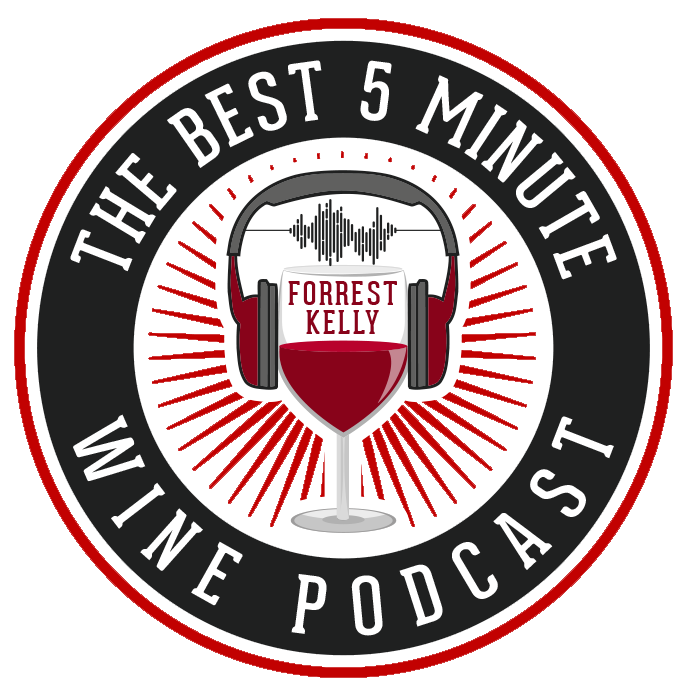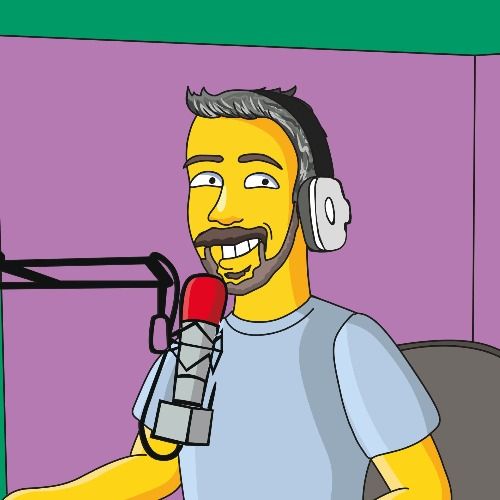Episode 2
Heat Waves and Harvests: The Challenges of Arizona Winemaking
Discover the fascinating journey of Callaghan Vineyards, a winery in Arizona that emphasizes the importance of quality over quantity in winemaking. Host Forrest Kelly interviews Kent Callaghan, who shares insights into the challenges faced when starting the vineyard amidst extreme weather conditions in the 1990s. With over 30 years of experience, Kent discusses the critical role of pruning in achieving success and the ongoing quest to determine which grape varieties thrive best in Arizona’s unique climate. Listeners will also learn about the intriguing history of the corkscrew, a tool essential for wine lovers. Join us for an adventure through the world of winemaking, where Kent’s passion and dedication shine through, making it clear that the journey of discovery is just as important as the final product in the glass.
Welcome to The Best 5 Minute Wine Podcast. I’m your host Forrest Kelly from the seed to the glass. Wine has a past. Our aim at The Best 5 Minute Wine Podcast is to look for adventure at wineries around the globe. After all grape minds think alike. Let’s start the adventure.
Our featured winery is: We venture to Arizona. Callaghan Vineyards. Dr. Gordon Dutt, doing some research for a project that he was working on, was surprised to find that there were no wineries in the state, even though the soil composition was similar to Burgundy France after some funding. The wine business was born in Elgin, Arizona. The state of Arizona has over 100 wineries, but in a particular area, we’re talking about is fifteen, including Kent, Callaghan Vineyards.
So we go back to summertime 1990, Ken’s parents decide to start the vineyards along with Kent. But Mother Nature didn’t exactly greet him with open arms.
Well, we planted in the middle of a heatwave. It was the first time, as far as I know, Sky Harbor Airport in Phoenix had shut down. Think it was 122 for a couple of days. It was 105 here in Elgin.
So we lost a lot of our plantings right off the bat in Cabernet, which was about 9000 of those vines to us, probably twenty-five hundred.
It’s going to be all that hard work. Then to see those vines die because of the extreme heat, you probably wonder whose idea was this anyway?
It was my dad’s idea. He had been a real home winemaker, so they thought this parcel man asked me to come on to help them plant the starting point of entry and start a winery. I was right out of college at that point, basically.
So you graduate from college. Where did you to college? Pomona in Claremont. Okay. In Southern California. And graduated with a degree in philosophy. So from that to the current time, you’ve been doing this. What? Let’s say you do the math. You’re a little over 30 years.
Yeah, 30 years. 30 of vintage this year and then 31st first year growing.
How big is pruning into the success of a vineyard? It’s huge. In my opinion, the single most important thing that you do if I had to rank them.
Why is it so critical? Well, It sets the stage for basically everything else. If you prune correctly, you know, you’re just setting yourself up for success the vine architecture, the way the vine grows is going to give you hope what you know, he’s intending to get with less need for inputs, particularly manual input.
Without getting too philosophical, how would you describe your vineyard, your winery? We’re not looking for a huge crop. I think we’re looking for quality fruit. It’s the whole focus on what we do.
Are you one of the bigger wineries? Biggest acreage, one of the smaller wineries. Our output is not particularly large. We’re probably the third our fourth-largest, something like that out of fifteen. Yeah, well, I was the whole goal from the start was never to be a large operation, but a quality one.
It’s a winery. What are you most proud of? I mean, just enjoy it. I guess we’re best known for. We’re still experimenting. I mean, it’s been quite a long journey in trying to figure out what varieties grow best and not only in Sonoita, where we are specifically on our specific site. And that is something that’s still ongoing. It’s been fun and somewhat now. I’m consuming, obviously, but mostly rewarding. Otherwise, you’re not just our own, but for the folks that are consumers that enjoy our wine. I think it’s interesting for them to see, you know, the library historical data to see how the wines age, what’s done well, you know, and how the vintage is different are different because we definitely have vintage variation in Arizona in general and particularly in Sonoita due to the monsoon rainfall that we get, everything depends on how much rain falls when it falls. If we have a cloud cover at critical times when it rains and that kind of thing. So all of those things affect and that obviously is effects your wine, not only air quality but also the character of the vintage.
Ok. Due to time constraints, that concludes part one of our interview with Kent of Callaghan Vineyards. So that brings us up to our listener voicemail.
Hello. This is Savannah from Corona, California. I would like to know who invented the corkscrew and when. As far as historians can recall the earliest reference to a corkscrew was in the 1680s. They called the crude instruments a steel worm. We do know that Reverend Samuel Henshall received the first patent in 1795. Thank you, Savannah, for your question.
Thank you for listening. I’m Forrest Kelly. This episode of the Best 5 Minute Wine podcast was produced by IHYSM, if you like the show tell your friends and pets and subscribe. Until next time pour the wine and ponder your next adventure.
Please subscribe from your favorite Podcast Platform: Apple, Spotify,
Companies mentioned in this episode:
- Callaghan Vineyards
- University of Arizona
Transcript
Welcome. Welcome The Best 5 Minute Wine Podcast. I'm your host Forest Kelly. From the seed to the glass, wine has a past.
Our aim at The Best 5 Minute Wine Podcast is to look for adventure at wineries around the globe. After all, grape minds think alike. Let's start the adventure. Our featured winery is. We venture to Arizona and Callaghan vineyards.
In the mid seventies, a soil scientist from the University of Arizona, doctor Gordon Dutt, doing some research for a project that he was working on, was surprised to find that there were no wineries in the state even though the soil composition was similar to Burgundy, France. After some funding, the wine business was born in Elgin and Sonoita area in Arizona.
The state of Arizona has over 100 wineries, but particular area we're talking about.
Kent Callaghan:This is, including Kent Callaghan, owner, winemaker, vineyard Guy Callaghan Vineyard so we go.
Forrest Kelly: Back to summertime,: Kent Callaghan:Well, we planted in the middle of a heat wave. It was the first time that as far as I know, Sky harbor airport in Phoenix had shut down.
In Cabernet, which was about: Forrest Kelly:All that hard work and then to see those vines die because of the extreme heat, you probably wonder, whose idea was this anyway?
Kent Callaghan:My dad's idea. He had been a home winemaker.
So they bought this parcel and then asked me if I wanted to help them plant and start, plant a lanyard and start a winery. I was right out of college at that point basically.
Forrest Kelly:So you graduate from college, where'd you go to college?
Kent Callaghan:Pomona, in Claremont.
Forrest Kelly:Okay. In southern California. And graduated with a degree in philosophy. So from that to the current time you've been doing this, what?
Let's see, do my math here. A little over 30 years.
Kent Callaghan:Yeah, 30 years. 30 is vintage this year and then 31st year growing.
Forrest Kelly:How big is pruning to the success of a vineyard?
Kent Callaghan:Oh, it's huge. It's my opinion it's the single most important thing that you do. If you had to rank them, explain.
Forrest Kelly:How, why it's so critical.
Kent Callaghan:Well, it sets the stage for basically everything else. If you prune correctly, you know, you're just setting yourself off for success. Divine architecture.
The way the vine grows is going to give you hopefully what you've intended to get with less need for inputs, particularly manual input.
Forrest Kelly:Without getting too philosophical, how would you describe your vineyard, your winery?
Kent Callaghan:We're not looking for huge crops. We're looking for quality fruit. So it's. That's the whole focus of what we do.
Forrest Kelly:Are you one of the bigger wineries.
Kent Callaghan:Biggest acreage, one of the smaller wineries? Our output is not particularly large. We're probably the third large, fourth largest, something like that, out of 15.
Yeah, well, that was the whole goal from the start, was never to be a large operation, but a totally quality oriented one.
Forrest Kelly:It's a winery. Of what are you most proud of?
Kent Callaghan:I just. A lot of things, I mean, just enjoy, I guess. We're best known for reds. We're still experimenting. I mean, it's been a.
Quite a long journey in trying to figure out what varieties grow best, not only in Sonoita, where we are specifically, but on our specific site. And that is something that's still ongoing. It's been fun and somewhat, you know, time consuming, obviously, but, uh, mostly rewarding.
So our best varieties, in my opinion, for this site, and generally in Sonoita too, at this point, graciano, sativardeau, tonat immediately come to mind.
And those for whites, we are really starting to lean towards t man thing, which is the white variety that comes from the same area of southwestern France that Thanat comes from. We come, got into the business not knowing anything really about wine, but basically become a wine geek.
So that's, to me, the most interesting thing about wine.
Learning about, you know, other wines in particular, not just our own, but for the folks that are consumers that enjoy our wines, I think it's interesting for them to see, you know, the library tasting we're going to do to see how the wines age, what's done well, you know, and how the vintage is different, are different because we definitely have vintage variation in Arizona in general, and particularly in Sonoita, due to the monsoon rainfall that we. We get.
Everything depends on how much rain falls, when it falls, if we have, you know, cloud cover at critical times when it's, you know, Verizon, that kind of thing. So all of those things affect the. And that obviously affects your wine, not only your quality, but also the character of the vintage.
Forrest Kelly:Okay. Due to time constraints. That concludes part one of our interview with Kent of Callahan vineyards. So that brings us up to our listener voicemail.
Kent Callaghan:Hello, this is Savannah from Corona, California. I would like to know who invented the corkscrew and when.
Forrest Kelly: nce to a corkscrew was in the:Thank you, Savannah, for your question. Thank you for listening. I'm Forrest Kelly. This episode of The Best 5 Minute Wine Podcast was produced by IHYSM.
If you like the show, please tell your friends and pets and subscribe. Until next time, pour the wine and ponder your next adventure.


